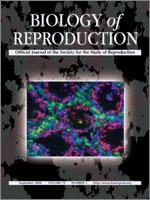In the gastrointestinal tract, interstitial cells of Cajal (ICCs) generate a pacemaker activity. They produce electric slow waves that trigger and coordinate gut smooth muscle contractions. Interstitial cells of Cajal's slender shape is revealed by KIT immunostaining. Based on several features, including KIT expression and KIT dependence, ICC-like cells were identified in nongastrointestinal tissues. Here, we investigated in the mouse whether uterine contractions depend on ICC-like cells' activity. By labeling KIT-expressing cells, we found putative ICC-like cells in the uterus, observed as KIT-positive interstitial, long spindle-shaped cells with fine branched cytoplasm processes, distributed in muscular layers and in subepithelial connective tissue. We then checked the potential KIT dependence of ex vivo contractile activity of the uterus by combining genetic and pharmacological approaches, using the KitW-v hypomorphic mutation, and imatinib as a KIT noncompetitive inhibitor. We found a significant reduction in frequency of longitudinal uterine contractions in KitW-v/KitW-v compared with Kit / mice, whereas amplitude was unaffected. There was no difference in frequency or amplitude of circular uterine contractions between KitW-v/KitW-v and Kit / mice. Ex vivo treatment of Kit / uterine horns with imatinib resulted in a dose-dependent reduction of the frequency and amplitude of longitudinal myometrial contractions. Amplitude and frequency of circular contractions were unaffected in presence of imatinib. These concurrent results suggest that longitudinal contractions of the uterus depend on a KIT signaling pathway of ICC-like cells. The existence of ICC-like cells in the myometrium may enhance our understanding of uterine spontaneous contractile activity and suggest new approaches for treatment of uterine contractility disorders.
How to translate text using browser tools
1 September 2008
Uterine Contractions Depend on KIT-Positive Interstitial Cells in the Mouse: Genetic and Pharmacological Evidence
Sébastien Allix,
Edouard Reyes-Gomez,
Geneviève Aubin-Houzelstein,
Delphine Noël,
Laurent Tiret,
Jean-Jacques Panthier,
Florence Bernex
ACCESS THE FULL ARTICLE

Biology of Reproduction
Vol. 79 • No. 3
September 2008
Vol. 79 • No. 3
September 2008
female reproductive tract
gene regulation
interstitial cells
signal transduction
uterus




